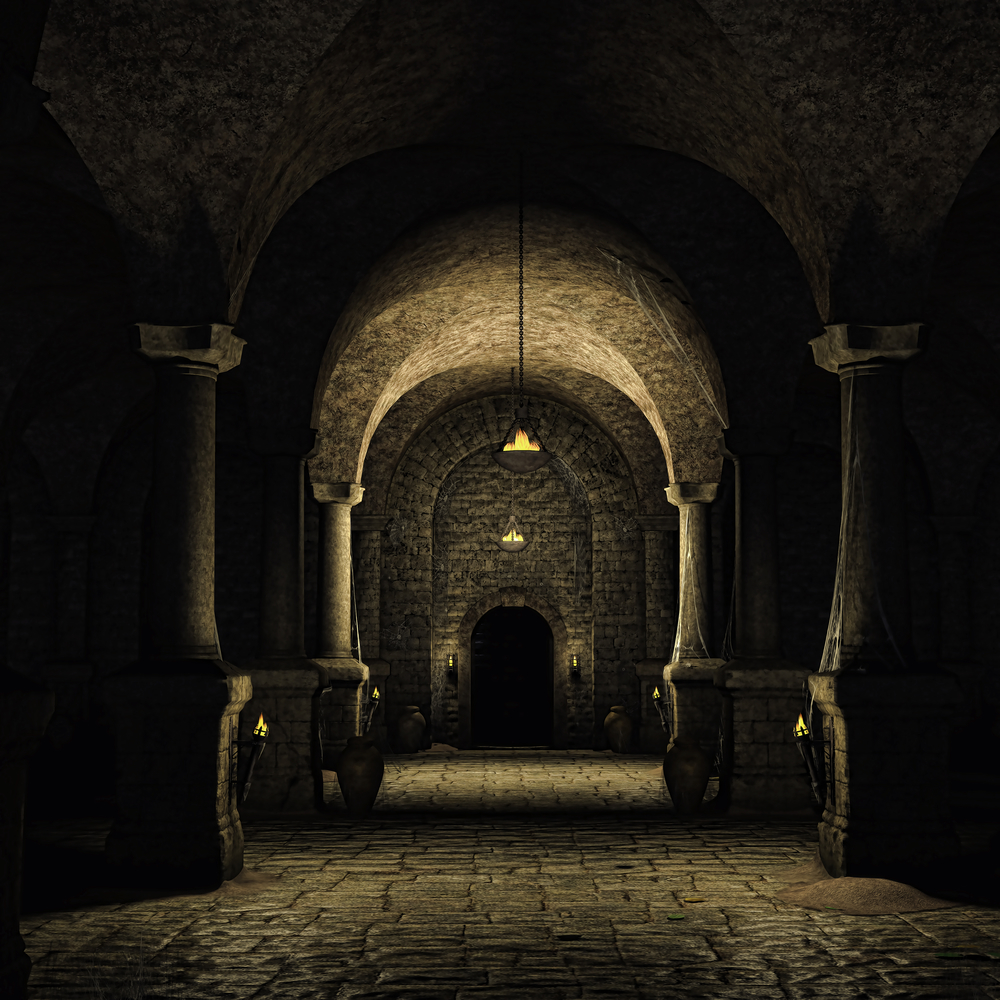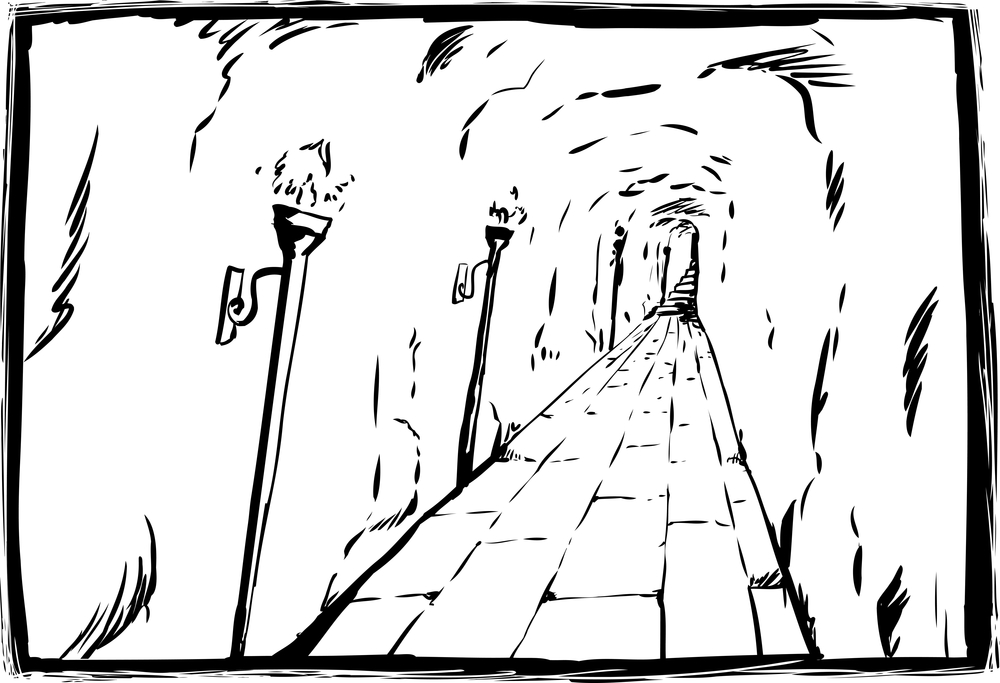Secret passages. These are an essential element in any Dungeons and Dragons game. And they come in many forms. Even when they are discovered the means of opening them may still not be clear. In order to find them at all time must be spent investigating the area. Tapping the walls with poles, shining the lanterns to see if there are cracks apparent and other means must be pursued.
Secret Doors Versus Concealed Doors
In early Dungeons and Dragons editions a distinction was made between secret and concealed doors. In later edition this distinction is sort of forgotten. But in these early editions there was an increased chance for finding concealed doors over secret ones.
A concealed door was one that was purposefully hidden by some means such as: a trap door under a rug, a hidden door behind a curtain or tapestry, a door covered over with plaster. Once they are discovered it becomes obvious that they are a door. A secret door, however, is a door which looks just like a normal feature of the room. It might look like a normal section of wall. They might be discovered by tapping the surface and listening for hollow sounds. But discovering the door does not mean that the adventurers have discovered the means of opening that door.
Mechanisms for Opening a Secret Door
This is where the fun begins. So many adventure modules overlook the role playing opportunity that a secret door presents. Because this is basically a puzzle that the adventurers will want to solve. Granted, a higher level party, will just look for some magical means to bypass it. But that is another issue. And they may not want to waste a spell if they can solve the issue on their own.
Some possible ways that a secret door could be triggered:
- The torch sconce – turn it downward and the door slides open
- The statue or idol in the room – manipulate some moving part of it to make the door slide open
- The secret password opens the door
- A riddle answered opens the door
- A loose tile in the floor must be stepped on to open the door
- a special key must be inserted into some statue in the room to open the door
- One of my favorites is to put a puzzle in some remote part of the dungeon and if that is solved the door on some far end of the dungeon is opened. The adventurers may hear grinding sounds in the distance but will have no idea what they have done
- A certain musical tune may open the door
- A hidden lever somewhere in the room opens it
- Another favorite of mine is to have a statue that can be rotated in the room. It has a hand pointing in one direction. If the statue is turned towards the secret door it will open. If it is turned elsewhere it closes again
- Some magical gem found elsewhere in the dungeon must be brought to the wall and it will open. Or perhaps the gem must be inserted into some spot where it will fit perfectly

There are countless possibilities for ways to open a secret passage or door. And it will drive your players nuts trying to find it. This can bring great role playing fun and can amuse the Dungeon Master as the adventurers tear out their hair trying to find the way in.
There is an excellent article I found on a pathfinder blog regarding this subject. Yes. I am sorry. I used that ugly word here. But the article is good nevertheless. The blog is called Raging Swan Press. The link is as follows:
The article has other fine suggestions on triggering a secret door.
Demi Humans and Secret Doors
Another difference between the early versions of Dungeons and Dragons and the latest incarnation of the game is the natural skill set of non human characters. In Advanced Dungeons and Dragons 1st Edition for example an Elf had a chance of finding a secret door just by walking by it. If actively looking for it the Elf had a greater chance of finding it. And concealed doors the Elf had yet a greater chance of finding the concealed door.
This is one of the greatest changes between the early editions of the game and the most recent edition. Playing a non human character had advantages. But it also had disadvantages. Most groups wanted at least one elf in their group if for no other reason but to help find secret doors. But this came at a cost. Non human characters were not allowed to advance to the highest levels.
Conclusion
Secret passages can add a special element of fun to your games if you use them right. Just because the adventurers have found a secret passage does not mean they know how to use it. And that is going to drive them bonkers.


